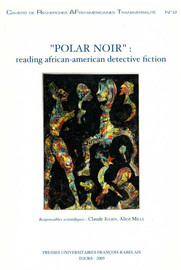Dr. R. Krishnaveni
http://www.the-criterion.com/V2/n3/Krishnaveni.pdf
The Criterion: An International Journal in English ISSN (0976-8165)
In viewing the peripheral world of wild and black folk culture as a passive
spectator of a thematic that does not touch the modernity, rather than as a constitutive
moment of modernity. African American writer views the crises of modernity and the
subsequent post modern critique solely within the white European – North American
moment. Wild, black folk culture and the periphery are the other face, the alterity,
essential to modernity. Ishmael Reed’s novels are modern paradigm and assume
planetary post modernism.
In his novels, Ishmael Reed uses Jazz age and Harlem Renaissance to undermine
instrumental reason and to show how the novel and Western metaphysics are constructs,
and thus why certain issues of heterogeneity, difference, and fluidity and the critique of
closure linearity and absolute truth do not belong exclusively to a European-centered post
modernism. But, unlike other African American writer, Ishmael Reed uses Jazz and other
African American cultural symbols more visibly in the novels. The novels begin like a
film: the action starts in medias res, like a detective story, before the title page. Only after
the initial reports of the spontaneous epidemic one can get the title, publisher, date,
epigraph and dedications. Then, like a film, it returns to the story.
This paper analyses the technique of detective stories, in the linear form of
arrative and intertexuality and also focuses how it resembles a typical dime-store
detective novel or television movie and the adherence to a singular truth supported by the
Western detective story. Ishmael Reed in Mumbo Jumbo writes a detective story that
shows it as a linguistic invention. The novel dramatises the direct confrontation between
European and African Centric thought and culture. As the novel opens, there has erupted
what Ishmael Reed, signifying on Harriet Beecher Stowe, calls a ‘Jes Grew’ epidemic,
which he associates, specifically, with African religious practice and dance. Jes Grew,
writes Ishmael Reed, is “an anti-plague” which enlivens the host; it is as electric as life
and is characterised by ebullience and ecstasy. Establishing, from the outset, the schism
between Western and African sensibilities and recalling Loop Garoo’s Innocent VIII,
Ishmael Reed adds that terrible plagues are due to the wrath of the Christian God; but Jes
Grew is the delight of the African gods.
spectator of a thematic that does not touch the modernity, rather than as a constitutive
moment of modernity. African American writer views the crises of modernity and the
subsequent post modern critique solely within the white European – North American
moment. Wild, black folk culture and the periphery are the other face, the alterity,
essential to modernity. Ishmael Reed’s novels are modern paradigm and assume
planetary post modernism.
In his novels, Ishmael Reed uses Jazz age and Harlem Renaissance to undermine
instrumental reason and to show how the novel and Western metaphysics are constructs,
and thus why certain issues of heterogeneity, difference, and fluidity and the critique of
closure linearity and absolute truth do not belong exclusively to a European-centered post
modernism. But, unlike other African American writer, Ishmael Reed uses Jazz and other
African American cultural symbols more visibly in the novels. The novels begin like a
film: the action starts in medias res, like a detective story, before the title page. Only after
the initial reports of the spontaneous epidemic one can get the title, publisher, date,
epigraph and dedications. Then, like a film, it returns to the story.
This paper analyses the technique of detective stories, in the linear form of
arrative and intertexuality and also focuses how it resembles a typical dime-store
detective novel or television movie and the adherence to a singular truth supported by the
Western detective story. Ishmael Reed in Mumbo Jumbo writes a detective story that
shows it as a linguistic invention. The novel dramatises the direct confrontation between
European and African Centric thought and culture. As the novel opens, there has erupted
what Ishmael Reed, signifying on Harriet Beecher Stowe, calls a ‘Jes Grew’ epidemic,
which he associates, specifically, with African religious practice and dance. Jes Grew,
writes Ishmael Reed, is “an anti-plague” which enlivens the host; it is as electric as life
and is characterised by ebullience and ecstasy. Establishing, from the outset, the schism
between Western and African sensibilities and recalling Loop Garoo’s Innocent VIII,
Ishmael Reed adds that terrible plagues are due to the wrath of the Christian God; but Jes
Grew is the delight of the African gods.
